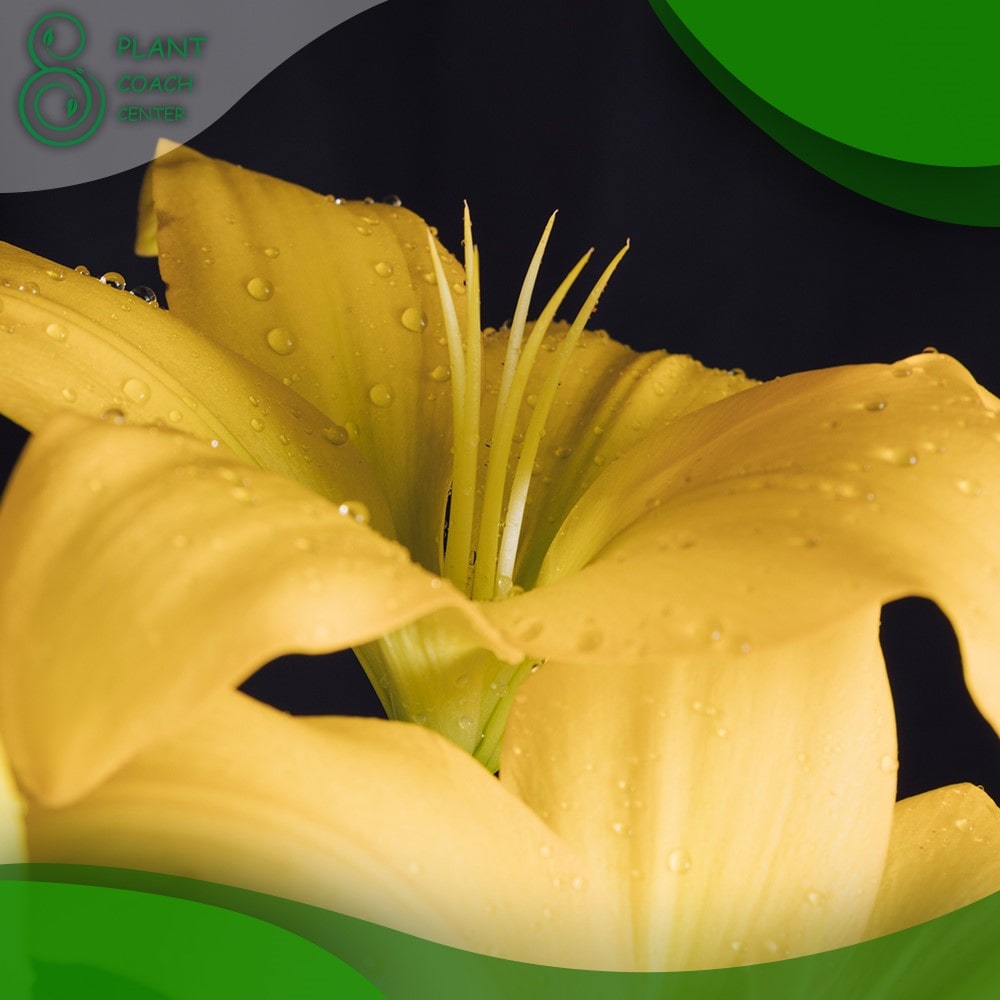When To Cut Back Stella D Oro Daylilies
Stella D’Oro Daylilies are beloved perennial plants known for their stunning golden-yellow flowers and exceptional hardiness. These charming plants have captured the hearts of gardeners worldwide, gracing gardens, borders, and containers with their vibrant blooms.
Understanding the nuances of their growth cycle and implementing proper care practices, including knowing when and how to cut them back, is essential for their overall health and beauty.
Understanding the Growth Cycle of Stella D’Oro Daylilies
One must comprehend their growth cycle to care for Stella D’Oro Daylilies effectively. These hardy perennials go through several stages: dormancy during winter, emergence in spring, blooming throughout summer, and post-bloom in fall. Knowing the timing of each stage helps gardeners plan when to expect their daylilies to bloom and when they’ll require attention.
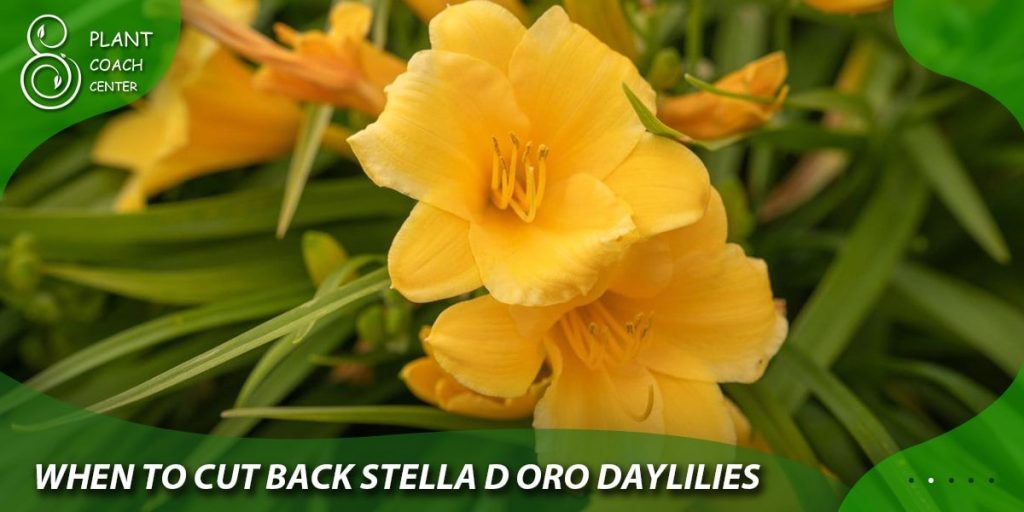
Importance of Pruning and Cutting Back
Pruning and cutting back Stella D’Oro Daylilies play a crucial role in their overall health, appearance, and ability to thrive year after year. It is a fundamental practice that goes beyond just maintaining the aesthetics of the plant. Understanding the significance of pruning will empower gardeners to make informed decisions and foster the best conditions for their daylilies to flourish. Here are some key aspects that highlight the importance of this essential gardening task:
Stimulating New Growth
When daylilies can bloom without intervention, they eventually produce seeds in their spent flower heads. This natural process diverts energy from the plant, reducing flower production. The plant is prompted to redirect its resources toward producing new flower buds and leaves by cutting back the fading blooms. This encourages a continuous cycle of vibrant blooms throughout the growing season.
Enhancing Flowering
Regular pruning and cutting back produce more robust and abundant flowering. Removing faded flowers and dead foliage prevents the plant from expending energy on non-productive parts, allowing it to focus on developing new buds and blooms. As a result, the daylilies showcase a more impressive and captivating display of colors, enhancing the overall visual appeal of the garden.
Disease and Pest Prevention
Dead and decaying plant material can become a breeding ground for pests and diseases. By promptly removing faded flowers and unhealthy foliage, you reduce the risk of infestations and the spread of diseases among your daylilies and other nearby plants. Additionally, good air circulation around the pruned daylilies can prevent the development of fungal issues, promoting better plant health.
Promoting Plant Longevity
Regular pruning is an investment in the long-term health and longevity of your Stella D’Oro Daylilies. By encouraging new growth and preventing the depletion of resources through seed production, the plant stays vigorous and capable of enduring various environmental challenges. Healthy daylilies are more resilient and better equipped to thrive in changing weather conditions and resist pests and diseases.
Division and Propagation
Cutting back also plays a crucial role in dividing and propagating Stella D’Oro Daylilies. As the plants grow and spread, they become crowded over time, decreasing flowering performance. By dividing the clumps and replanting the separate fans, you can rejuvenate the daylilies and create new plantings to expand your garden or share with fellow gardeners.
Aesthetic Appeal
Beyond the practical benefits, pruning enhances the overall aesthetic appeal of your garden. A well-maintained daylily patch with neatly cut-back foliage and spent flowers adds a sense of order and tidiness to the landscape. The vibrancy of fresh blooms against clean, healthy foliage creates a beautiful and inviting space for gardeners and visitors.
The importance of pruning and cutting back Stella D’Oro Daylilies cannot be overstated. By practicing this essential gardening task, you provide your daylilies with the care they need to thrive and dazzle with their captivating beauty. Regular pruning not only ensures a continuous display of vibrant flowers but also contributes to the overall health and longevity of the plants, making them a cherished feature of any garden landscape.
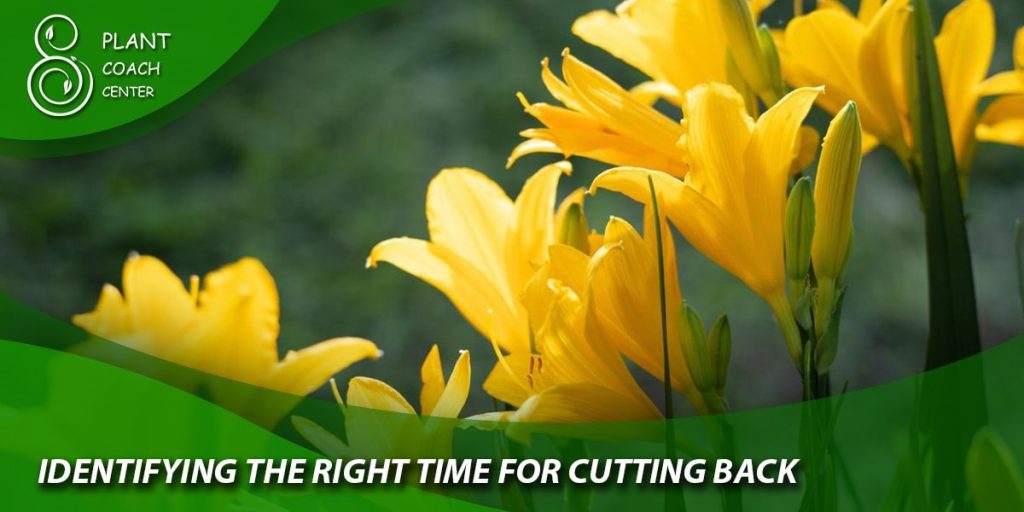
Identifying the Right Time for Cutting Back
Knowing the optimal time to cut back Stella D’Oro Daylilies is crucial to ensure the best possible results regarding plant health, blooming performance, and overall garden aesthetics. Cutting back too early or too late can impact the plant’s growth and ability to produce flowers, so gardeners must be attentive to specific cues and signs that indicate the appropriate time for pruning. Here are the key factors to consider when identifying the right time for cutting back your daylilies:
After the Last Bloom
The most common and reliable indication that it’s time to cut back Stella D’Oro Daylilies is after the last bloom of the season. As the plant’s blooming cycle draws close, individual flowers fade and wither. Once many flowers have passed their prime and the overall display diminishes, it’s time to start pruning.
Observing Fading Flowers and Foliage
As you tend to your daylilies regularly, take note of any flowers that are losing their vibrancy and starting to wilt or turn brown. Also, pay attention to the foliage, as older leaves may become yellow or brown and wither. These visual cues indicate that the plant is transitioning from its blooming phase, signaling an appropriate time to perform a cut-back.
Avoiding Seed Pod Formation
If seed pods are developing after the flowers have bloomed, it indicates that the daylilies have already invested energy in seed production. To encourage more flower production and prevent the plant from diverting further resources to seed development, it’s essential to remove these seed pods promptly.
Mid-to-Late Summer
Stella D’Oro Daylilies usually bloom from late spring to mid-summer for most regions with a standard growing season. Therefore, the ideal time for cutting back typically falls in mid-to-late summer. However, specific timing can vary based on your local climate and weather patterns, so paying attention to the plant’s natural cycle in your garden is crucial.
Vigilance with Reblooming
Stella D’Oro Daylilies are renowned for their reblooming capabilities, which can extend their flowering period throughout the growing season. During reblooming phases, continue to deadhead faded flowers regularly to encourage the production of new buds and prolong the bloom cycle.
Cooler Fall Weather
In some regions, where the growing season extends into the early fall, cutting back Stella D’Oro Daylilies can be done later than mid-summer. Cooler temperatures and shorter daylight hours may naturally slow the plant’s growth, making it appropriate to perform the cut-back later in the season.
By attentively observing the condition of your Stella D’Oro Daylilies and being mindful of their natural growth cycle, you can pinpoint the right time to cut them back. Promptly removing fading flowers and spent foliage encourages the plant to focus its energy on new growth and future blooms. This proactive approach to pruning ensures that your daylilies remain healthy, vibrant, and a captivating highlight in your garden throughout the blooming season.
Tools and Techniques for Cutting Back Daylilies
To ensure a successful cut-back, the right tools and techniques are essential. Use sharp, clean pruning shears or scissors to avoid damage to the plant. The general rule is to cut the stems to around 4-6 inches above the ground. If there’s dead or diseased foliage, remove it to prevent the spread of issues.
Step-by-Step Guide to Cutting Back Stella D’Oro Daylilies
- Assessing the Plant’s Health: Before pruning, examine the daylily for any signs of disease, pest infestations, or nutrient deficiencies. Address any problems before proceeding with the cut-back.
- Preparing for Pruning: Gather your tools and wear gardening gloves for protection.
- Pruning Techniques for Different Stages: For daylilies that have finished blooming, cut the flower stalks back to the base. In the case of plants with dead or damaged foliage, remove these leaves at their point of origin.
Dealing with Common Plant Problems
Despite their resilience, Stella D’Oro Daylilies can face challenges like pest infestations and diseases. Common issues include aphids, spider mites, and fungal diseases. Implementing preventive measures, such as proper watering and maintaining good airflow around the plants, helps mitigate these problems. Consider using organic treatments or consulting a local horticulturist for advice if issues arise.
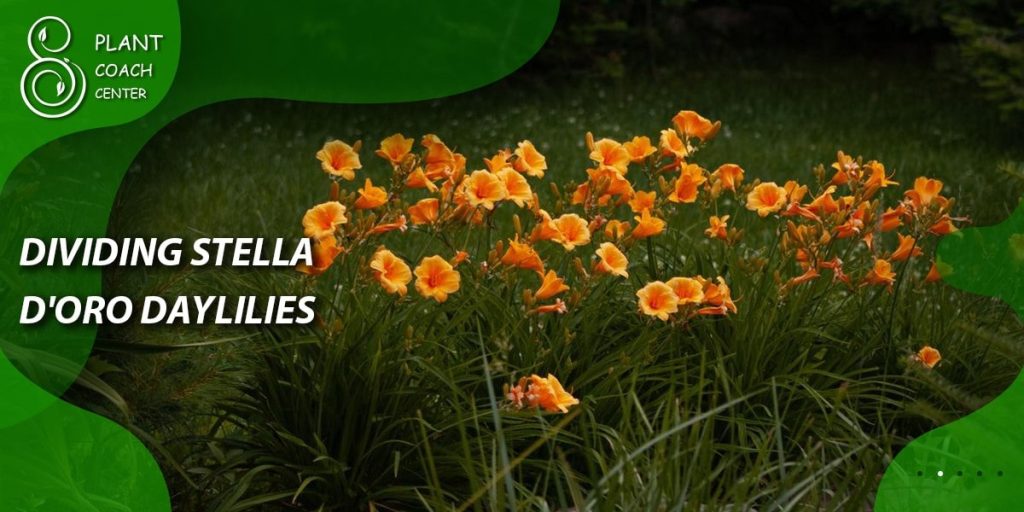
Dividing Stella D’Oro Daylilies
Over time, Stella D’Oro Daylilies may become crowded, leading to decreased flowering. Dividing the plants is a valuable way to rejuvenate and propagate them. Signs that division is needed include reduced blooming, fewer flowers per stem, and a clump with an expanding center. When the daylilies are not in bloom, carefully dig up the clump and separate the individual fans, ensuring each division has adequate roots and leaves.
Caring for Cut-back Daylilies
After pruning, maintaining proper care is essential to keep your Stella D’Oro Daylilies healthy and flourishing. Consistent watering, well-draining soil, and balanced fertilization are key components of daylily care. Apply a layer of mulch to retain soil moisture and control weed growth. As the fall season approaches, prepare your daylilies for winter dormancy by cutting back any remaining foliage and providing protection in colder climates.
Tips for Encouraging Reblooming
One of the most attractive features of Stella D’Oro Daylilies is their ability to rebloom throughout the growing season. Deadheading, the practice of removing spent flowers, plays a significant role in promoting extended blooming periods. As the flowers fade, carefully snip the stalk just below the base of the bloom. This encourages the plant to redirect energy from seed production to new flower buds, resulting in multiple rounds of vibrant blooms.
Frequently Asked Questions about Cutting Back Stella D’Oro Daylilies
- Can I Cut Back Daylilies Earlier in the Season?
While it’s generally best to wait until after the last bloom before cutting back Stella D’Oro Daylilies, exceptions can be made in specific situations. If the plant struggles with disease or pest infestations, immediate pruning might be necessary to prevent further damage. In such cases, remove only the affected portions and consider providing extra care to aid the plant’s recovery.
- How Often Should I Prune Stella D’Oro Daylilies?
The frequency of pruning Stella D’Oro Daylilies depends on the plant’s specific needs. Regular deadheading during the blooming season encourages reblooming and maintains a tidy appearance. After the final bloom of the season, a more comprehensive cut-back can be performed to prepare the daylilies for dormancy or propagation through division.
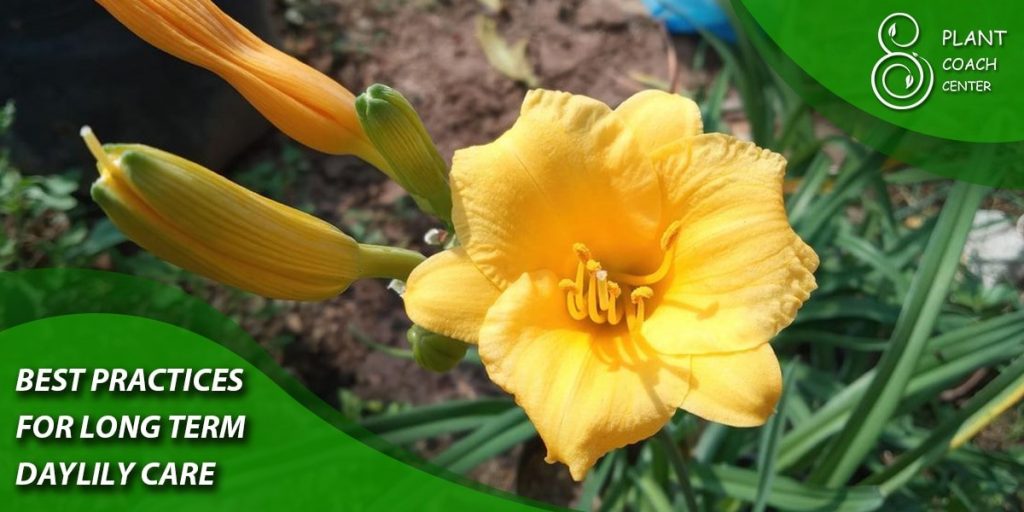
Varieties and Companions of Stella D’Oro Daylilies
Stella D’Oro Daylilies come in various cultivars, each offering unique colors and characteristics. For instance, ‘Stella Supreme showcases a darker yellow hue, while ‘Stella d’Oro Double boasts double blooms for added allure. Consider exploring different varieties to add diversity and interest to your garden. When selecting companion plants, opt for those that complement the daylilies’ colors and growth habits, such as lavender, catmint, or ornamental grasses.
Best Practices for Long-Term Daylily Care
To ensure the long-term health and vitality of Stella D’Oro Daylilies, focus on soil maintenance and pH levels. Daylilies prefer slightly acidic to neutral soil, with a pH range of 6.0 to 7.0. Regularly test and amend the soil if necessary. Furthermore, provide the daylilies with adequate sunlight, as they thrive in full sun to light shade. Be mindful of planting locations, ensuring they receive the appropriate light exposure throughout the day.
Stories from Experienced Gardeners
Every gardener has a unique journey with their plants, and Stella D’Oro Daylilies are no exception. Take inspiration from fellow gardening enthusiasts who have grown and cared for these captivating perennials. Learn from their experiences, including challenges, successful care strategies, and the joy they’ve found in witnessing the daylilies’ beauty unfold.
Conclusion
Caring for Stella D’Oro Daylilies is a fulfilling and rewarding experience for any gardener. By understanding their growth cycle, knowing when and how to cut them back, and addressing common plant problems, you can ensure these delightful perennials grace your garden with vibrant blooms year after year. Remember, successful gardening involves both science and art. Observing and connecting with your plants will undoubtedly deepen your appreciation for the world of flora.
In conclusion, take the time to nurture your Stella D’Oro Daylilies with care and dedication, and they will undoubtedly reward you with their exquisite charm and enduring beauty. Embrace the journey of plant coaching, and through the cycle of growth, bloom, and rest, cultivate a harmonious relationship with these lovely daylilies in your garden. Happy gardening!
When should I cut back Stella D'Oro Daylilies?
After the last bloom.
How often should I prune daylilies?
Regularly during the blooming season.
Can I cut back daylilies earlier?
If needed, but after the last bloom is ideal.


